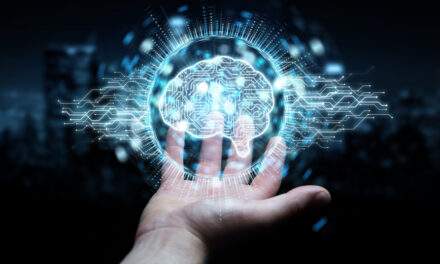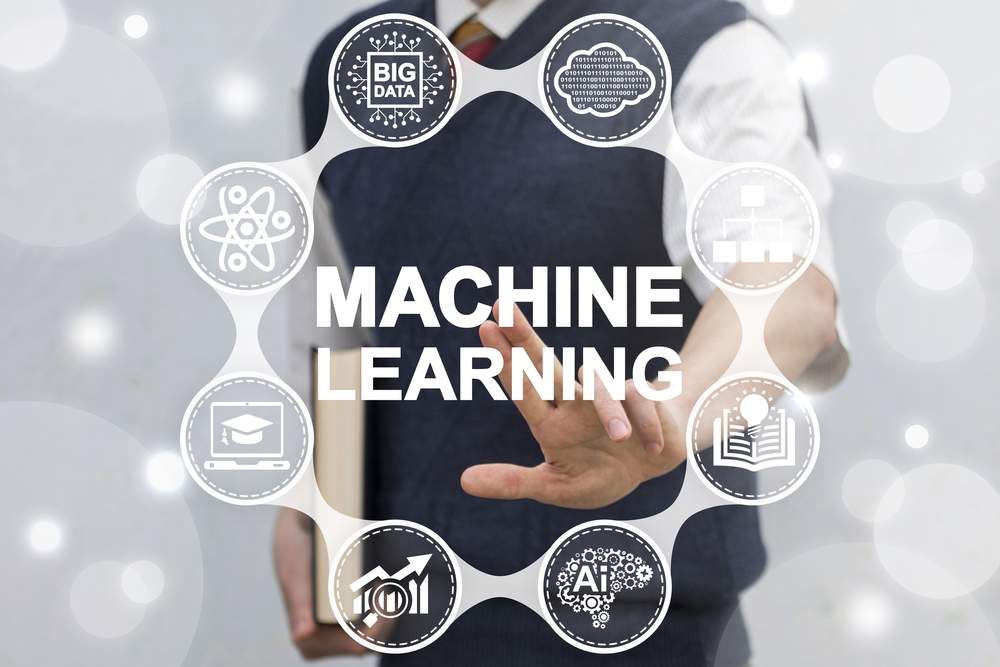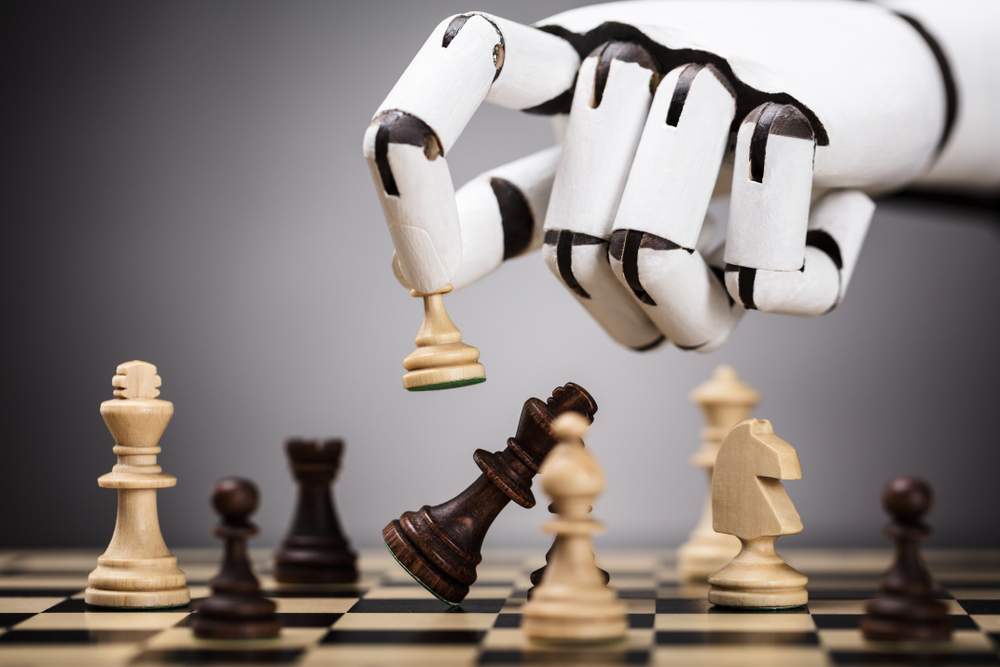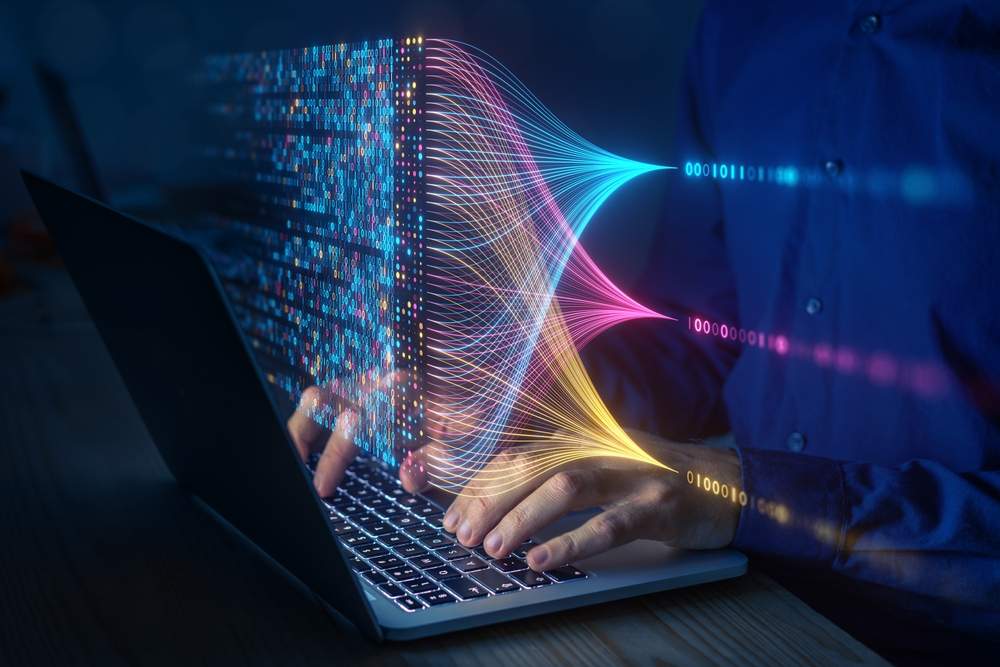If you’ve gotten lost down the YouTube rabbit hole…
If you’ve spent an hour or two scrolling through your Google newsfeed, Facebook, Instagram or Twitter…
Or if you’ve tried and failed to reach a live agent on a customer service chat box…
Then you’ve used artificial intelligence.
I know I’ve put AI Ian to work!
Robotics automation, generative AI and machine learning are all fascinating aspects of this technology. And they’re being used across so many industries right now — from music and social media to agriculture and health care.
But that last one is absolutely key to understanding how AI is being used to revolutionize finance.
Machine learning is changing the world right now … and even more in the years ahead.
As investors, it can also greatly improve your success on a trade.
In fact, it can give you a massive edge in the market — by increasing your returns while decreasing the risks you take.
What Is Machine Learning?
Machine learning is the latest evolution of data analytics.
A few decades ago, as a trader on Wall Street, I sat next to one of the greatest speculators on the planet.
It wasn’t the big gains that made him the greatest trader I’ve ever known. It was the fact that he figured out a niche that allowed him to profit on nearly 95% of trading days.
I know he likes his anonymity to this day. So I’ll just call him Mr. Henry, as that was the name he once used to make reservations for us at Smith and Wollensky.
Mr. Henry was an eccentric guy. After getting a master’s in mathematics from MIT, he applied his wizardry to betting on college football games, but apparently was run out of Vegas by the local mob.
He then ventured to Wall Street to figure out price fluctuations in the stock market.
Mr. Henry found an anomaly on the floor of the stock exchange, which he wrote a computer program to track.
You see, a couple times a day, the bid/ask spread of a random stock would suddenly widen. Bid/asks were quoted in fractions back then, and it was rare to have a quote wider than 1/8.
Before the NYSE was dominated by computers, when a bid/ask spread widened, it meant either a large seller or buyer walked up to the post and the specialist needed to advertise that he needed more buyers or sellers.
Many people back then tracked bid/ask spreads. This wasn’t earth-shattering.
But Mr. Henry added another variable that no other trader was looking at — something he called his “secret sauce.”
He looked at the time it took between when a bid/ask widened and when the stock traded again.
Mr. Henry then surmised that these market makers were buying and selling stocks for their own account. And if they widened their quotes lower and then quickly printed the next trade, they likely bought into the stock for themselves.
He figured out that it meant the seller was likely done, and the price would reverse.
So whenever he saw a spread widen lower and a quick print, he would buy the stock. Sometimes this only amounted to a ¼ or ½ point, sometimes he made a few points on the trade.
But the beauty was the consistency of his approach. He rarely had down days.
And when he did, we celebrated the end of a streak with a nice steak dinner!
The key thing here is a person with an MIT master’s degree selected the strategy, or the “parameters” that were tested.
Machine learning flips this script in a powerful way.
Instead of having someone like Mr. Henry figure out what variables to test, machine learning asks a hyperintelligent computer program (an AI). The machine doesn’t require any predefined rules to generate a selected outcome.
Instead of telling the machine what to test, the human suggests a desired outcome — like “find a reliable stock-picking method that does well with 30-day holding periods.”
Then the machine crunches trillions of data points to determine if it can create a useful system.
How the “Machine” Learns
The machine here is the AI program.
It analyzes single indicators. It analyzes two-indicator combinations, three-indicator combinations and even multihundred-indicator combinations. The combinations a machine can test are essentially endless.
Last week, I told you about Project An-E: the AI that can predict 30 days of market moves. It can even find your next winning stock to invest in.
For Project An-E, the investment research company TradeSmith loaded over 100 distinct variables into the machine-learning program.
My friend Keith Kaplan (the CEO of TradeSmith), along with his team of 36 data scientists, software engineers and investment analysts, created a system that has strong predictive ability over the short term (around 30 days).
These data sets include macroeconomic data, such as interest rates and inflation figures.
They also include fundamental data, like profit margins and price-to-sales ratios, as well as technical data, like relative price strength and moving averages.
Keith tells me that they brought no preconceived notions or biases to the project. There wasn’t a fanatical fundamental investor on the team rooting for his own strategy. There wasn’t a dedicated technical analyst rooting for her strategy.
They just gave the machine a desired outcome (find stocks poised to rise over the short term) — and let it do the rest. They didn’t teach the program anything. It taught itself.
The results are fantastic! (I’ll share them with you in a moment.)
But first, I’m going to share a fascinating aspect of machine learning and how it creates brand-new ways to think about the stock market…
AI Checkmate!
Years ago, when designers of AI-powered chess-playing programs started evaluating their systems, they noticed something peculiar about the strategies their programs employed.
The AI programs tended to employ seemingly bizarre strategies.
These were strategies that human players would never come up with and, in many cases, would ridicule if they came from another human player.
For example: In chess, a player can “sacrifice” a key piece if they believe that sacrifice will lead to ultimate victory. Sacrificing pieces in the pursuit of ultimate victory has been a strategy in chess for centuries.
However, to the surprise of human players, AI chess programs often make sacrifices that seem bizarre and nonsensical. AI chess programs create wild and complex strategies humans would never think of.
These AI-created chess strategies have been called “alien,” and even “chess from another dimension.”
And they end up crushing human players.
AI chess programs make seemingly bizarre moves because they have the computational firepower to “see” much further into the future than a human can.
AI programs can analyze millions of potential outcomes and create multi-move contingency plans for each outcome … all in less than the time it takes you to take a sip of water.
The chess strategies that AI produces aren’t bizarre. With its ability to analyze millions of possible outcomes, the moves only make sense.
Even a chess supergenius, such as the legendary Gary Kasparov, has less than 0.0001% of the computational ability an AI chess program has. It’s not even a contest.
How An-E Trades: An AI Investing Strategy
Knowing this fascinating aspect of AI, Keith’s team at TradeSmith was not surprised to see that their AI-powered stock market data analysis produced a specific type of trading strategy that most people would be very surprised by.
To recap, they gave the computer a huge variety of data sets to work with:
- Macroeconomic data.
- Company-specific fundamental data.
- Technical analysis data.
They expected to find a telling indicator — something that would matter more than the other factors.
Maybe it would be momentum. (A key aspect of a winning stock, in my view.)
Maybe stock fundamentals.
But as I said, sometimes the moves can seem bizarre to the human mind.
And it so clearly demonstrates the futility of picking stocks with the human brain instead of with a super-intelligent computer.
The TradeSmith found that while some factors matter more than others, An-E doesn’t stick to one generalized course over time.
- Sometimes the best-performing stocks over a 30-day period have strong momentum.
- Sometimes the best stocks are severely oversold.
- Sometimes the best stocks are boosted by shifting macroeconomic indicators.
To the computer, there are no biases based on previous successful strategies. An-E simply analyzes the data and produces the prediction for the best outcome.
There is no chess player with favorite moves. No stock analyst who picks based on fundamentals, or who might favor only momentum stocks.
With the human element removed, the system freely ranks based on the data analysis regardless of where it leads. And what they’ve found is a strong, statistically significant set of results.
So that’s why I believe it can provide you with a massive edge in the markets.
Social media is already run by algorithms. It recommends you more of what you want, based on your likes, subscribes and watch history.
AI can run your trading strategy with the same success.
And trading algorithms like the one TradeSmith has developed can be worth their weight in gold. They’re like the financial equivalent of closely guarded recipes, like Coca-Cola and Heinz ketchup.
But I still want you to learn as much about it as possible before you try it out for yourself.
So please take a minute to watch this free webinar: AI Predictive Project. Keith and I break down how An-E works, and how it can help you achieve your financial goals.
That’s all for today! See you on Tuesday.
 Ian KingEditor, Strategic Fortunes
Ian KingEditor, Strategic Fortunes
P.S. How do you think AI will change your life in the future? Let me know at BanyanEdge@BanyanHill.com.








